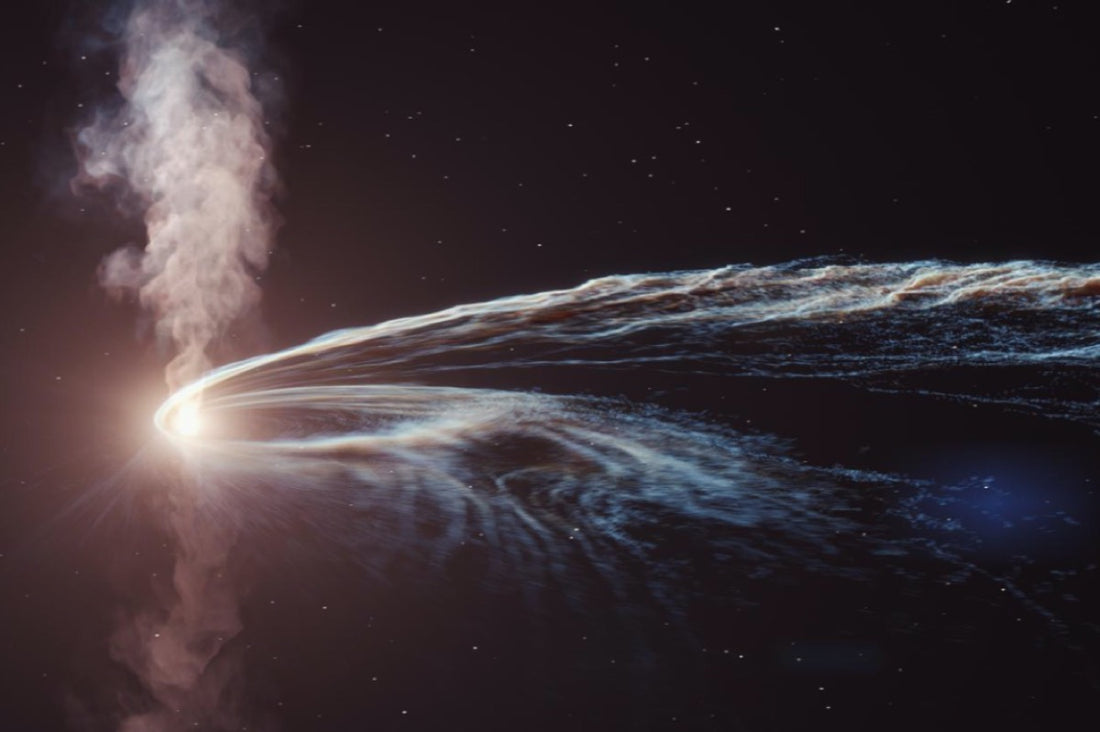
Watch Innocent Star Get Spaghettified By Violent Suck Hole
Share
A spectacularly bright burst of light more than 700 million light-years away is turning out to be an ongoing gift.
This was the blast from the heart of a galaxy as a dying star was ripped apart and partially eaten by a black hole that is approximately 5 million times the mass of the sun - a process known as 'spaghettification'.
There are a lot of violent ways to die in the universe, but death by spaghettification might be the most violent. This happens when a star wanders too close to a black hole, and the gravitational field of the black hole tears it apart - something called a tidal disruption event.
As the star is ripped apart, some of the debris 'spaghettifies' - turning into a thin filament, like a spaghetti noodle, that feeds into the black hole.
A brilliant flare of light is produced as a result of gravitational and frictional influences in the disk of accretion around the black hole. As the material depletes, the light fades.
A transient event just like that was picked up by the Zwicky Transient Facility in April 2019. AT2019dsg, a tidal disruption event, was unusually bright for a tidal disruption event, blaring across X-ray, ultraviolet, optical, and radio wavelengths.
In the inner edge of the accretion disk, closest to the black hole, the most energetic radiation is emitted, X-rays. If we can detect X-rays at all, it means we're looking down the pole of the supermassive black hole - otherwise, it would be obscured by the accretion disk.
Look at it like a donut from the side. Is there a hole there?
It's not the first time we've seen X-radiation in tidal disruption events, but AT2019dsg was different. Giacomo Cannizzaro of the Netherlands Institute for Space Research and Peter Jonker of the Netherlands Council for Space Research were part of a team that examined the electromagnetic output to uncover absorption lines.
Hold on to your pasta...
"Hungry fella? That oughta hold ya for a while..." - Ace Ventura
By the way, absorption lines are awesome. Astronomers take pictures of light, and if it's passed through something that slows or blocks some wavelengths, such as gas or dust, it shows up as dark lines.
They're everywhere, but they don't usually show up near supermassive black holes. Accretion disks tend to orbit around the equatorial region, like Saturn's rings. Straight down the pole is usually pretty clear.
These absorption lines varied in width and variation too. It looked like there were multiple strands of material, like a ball of string.
The spaghettified filaments could have been fragments of a tidally disrupted star, flung away from the bulk of the stellar debris.
According to the researchers, wreckage may form in streams when stars are disrupted.
"What we could be seeing is absorption lines caused by such streams, where the different orbital motions and projected velocities of these different streams cause the variation of the width of the lines,” the researchers wrote in their paper.
"To have this, we would need some of the self-gravitating streams to be deflected by large angles, while the bulk of the disrupted material circularizes into an accretion disk."
We'd have direct evidence for the first time if the team's interpretation of spaghettification turns out to be true.
AT2019dsg has come to our attention before, when scientists detected a high-energy neutrino coming from the event. There must be more surprises in store for us from this unusually bright star death.
Thanks for reading and spreading ARSE!
Fang this video to a mate to upgrade Aussie space and keep thrusting us into the deep unknown...
#Space_Aus




